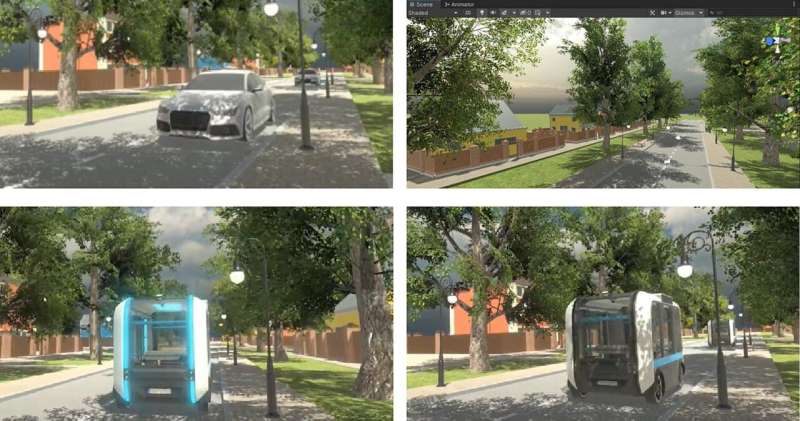This article has been reviewed according to Science X's editorial process and policies. Editors have highlighted the following attributes while ensuring the content's credibility:
fact-checked
trusted source
proofread
Automated vehicles: Social factors inform pedestrians' crossing decisions

QUT researchers have found that pedestrians' crossing decisions involving automated vehicles (AVs) are most influenced by nearby pedestrians.
Former QUT Ph.D. student Dr. Xiaoyuan Zhao, who is currently a postdoctoral scholar at University of South Florida, teamed up with CARRS-Q researcher, Professor Andry Rakotonirainy and Senior Research Fellow, Dr. Xiaomeng Li at the Center for Accident Research and Road Safety–Queensland (CARRS-Q), and, and French researcher Professor Delhome (Gustave Eiffel University).
Dr. Zhao said that when automated vehicles (AVs) enter public roads in coming years, pedestrians will acquire knowledge about these vehicles to interact with them safely and efficiently. The study is published in the journal Transportation Research Part F: Traffic Psychology and Behaviour.
"An aspect that particularly demands learning is the novel concept of external Human-Machine Interface (eHMI), which transmits explicit information about the vehicle to pedestrians, such as the vehicle's state (e.g., automated driving mode), intentions (e.g., yielding), and instructions for other road users," Dr. Zhao said.
"We designed a virtual reality study to investigate how pedestrians acquire, understand and adapt their behavior toward AVs equipped with eHMIs."
"The study postulates that in the social environment, others can be viewed as role models and used as a source of information."
"Consequently, the behaviors of others can significantly influence how individuals react to new and unfamiliar situations, illustrating the concept of social mirroring, where people tend to unconsciously mirror or imitate the actions and reactions of those around them, especially in novel or uncertain environments.
"Appropriate behaviors of other pedestrians in front of AVs improve individual compliance to eHMIs.
"At the same time, misleading behaviors of others can also be learned and imitated, leading to greater difficulty and lower trust in understanding the eHMIs."
Dr. Zhao said the impacts from others on pedestrian crossing decisions disappeared once participants became more familiar with eHMIs.
"This finding highlights the need to find solutions to facilitate the public acquiring knowledge about AVs and eHMIs," Dr. Zhao said.
"Along with observing others, qualitative data revealed that participants acquired knowledge about AVs and eHMIs through direct experience and drawing from their past experiences."
More information: Xiaoyuan Zhao et al, Crossing roads in a social context: How behaviors of others shape pedestrian interaction with automated vehicles, Transportation Research Part F: Traffic Psychology and Behaviour (2024). DOI: 10.1016/j.trf.2024.02.008





















